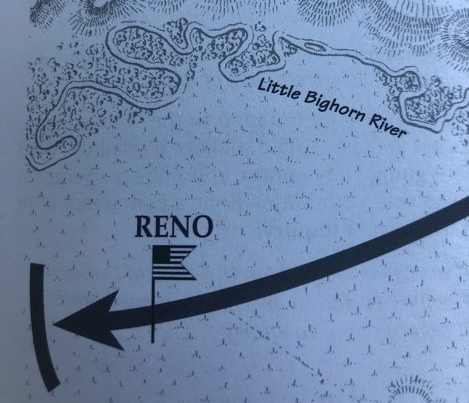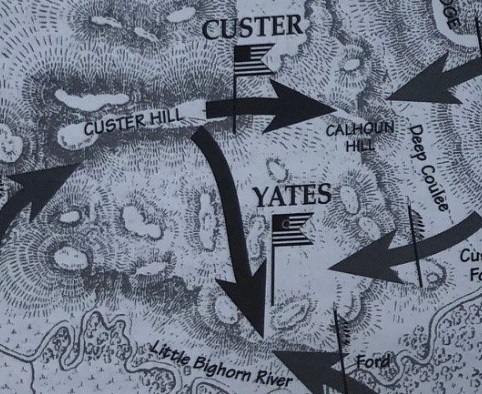The Field of Battle for our Participation Game
13 July 2018
The battle of the Little Bighorn took place on the 25th of June 1876. It was the culmination of an expedition to find the Plains Indian Tribes in the area, then to force them to go back their reservations.
The Battle became a classic encounter battle, with both sides feeling their way forward unaware of the size or presence of their opposition. There is an argument the the Indians were unsuspecting of the 7th Cavalry’s approach. However, as the battle progressed they were clearly reacting to local encounters and not keeping to any set plan. As the battle progressed Custer himself made several errors of judgement, these decisions were compounded by the inactions of his subordinates Reno and Benteen.
These mistakes added up and handed the initiative to Sitting Bull and Crazy Horse, who for their part took full advantage of them. Custer was then forced into reacting to the Indians arrayed against him with no hope of support. The increasing Indian numbers brought up to the battle simply overwhelmed and defeated Custer’s isolated and trapped command.

Picture credit: Courtesy of the National Park Service, Little Bighorn Battlefield National Monument
Painted by J.K. Ralston, "Call of the Bugle." This oil painting shows Custer rallying the troops for the final defense of Last Stand Hill. The Custer Battlefield Historical & Museum Association (CBHMA) commissioned it in 1964, donating to the park shortly after.
Our Approach
We decided that we will game the areas of the battle, but not the whole battlefield as large parts saw no action at all. Large areas of the battleground that serve no purpose to the game, other than to allow the transfer of forces across to the various areas of action of course.
The battlefield is large, 4 miles x 2 miles, and can be split into three main areas:
- Renos Attack
- Weir Point and Renos Hill
- Custer’s Hill
The map for Reno’s attack will be the largest at Describe each area and photo of them
1) Renos Attack

The maps are measured by Base Widths (60mm) and metres and this Map here will measure as follows:
Height: 33BW = 1,980mm or 1.5 miles
x
Width: 33BW =r 1,980mm or 1.5 miles
This will enable play of Reno’s attack on the Indian camp and supporting Custer or if the players are unsuccessful, his eventual retreat, route and escape to Renos Hill.
This will help us in not having to show the several thousands of Tipis that made up the Indian camps, we can do without going to the expense of buying, painting and then basing the camp itself which was vast.
The map will contain two transit exits:
- One on the NE (top right of the map as you look at it) and it will be a ford across the river near where the island sits in it and goes to the Weir Point an Renos Hill map.
- The other is on the NW (left side of the map as you look at it) going to the Custer’s Hill Map.
2) Weir Point & Renos Hill

The Map here will measure:
Height: 22BW = 1,320mm or 1.3 miles
X
Width: 33BW = 1,980 metres or 1.5 miles.
This will enable us to play Renos retreat to Renos Hill after his failed attack.
The subsequent advance to Weir Point. Then the fall back to Renos Hill.
The map will contain two transit exits.
One on the SW (bottom of the map as you look at it) of the map and one NW (left side of the map going towards the Custer’s Hill map).
3) Custer’s Hill

The Map here will measure:
Height: 33BW = 1,980 or 1.5 miles.
X
Width: 44BW = 2,640 mm or 1.75 miles.
This will enable us to play Custer’s Last Stand, his Reinforcement, or his Escape to Renos Hill.
The map will contain one transit exit. One on the SE (side of the map as you look at it) towards the Reno Hill & Weir Point map.
The game will be evenly poised to change history or confirm it. Will the players emulate their ancestors, make the same errors as they did on the day? Will they save the day with great leadership and a victory?
The game will reward those who participate with skill and bravery.